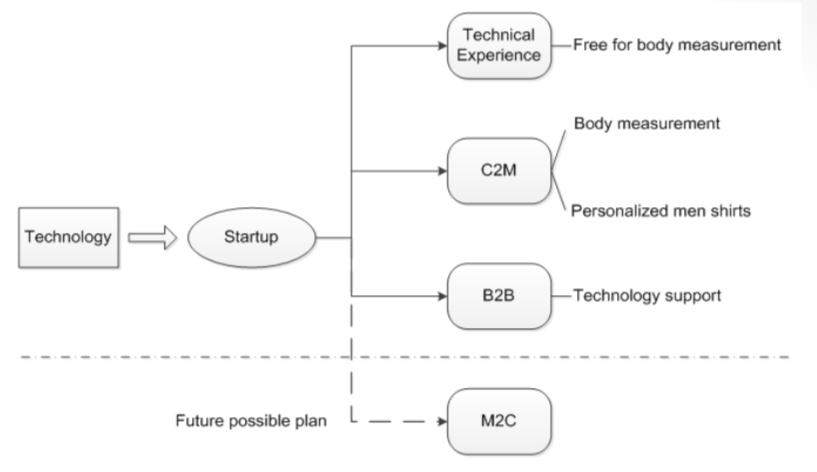Funded by a technology entrepreneurship, an AI-powered startup for suit tailoring service has been set up in Shenzhen in 2017 by a Ph.D. student graduated from Hong Kong. The key innovation is that a user simply takes one image of the full body from the front and another one from the side and the software reconstructs the customized 3D model with accurate measurements of chest, waist, hip, thigh, knee, calf, neck, arm length and shoulder slope within 1-2cm discrepancies depending on tight or loose fitting clothing in the images.
Enabled by big data analytics, a large dataset with over 10,000 human scan models and another dataset of fabric knowledge were used to train its AI to create precise 3D renders of users’ bodies from 2D images taken by a mobile phone. The main steps developed to realize automatic shape modelling are as follows:
- Detect body parts from front-view and side-view 2D images and construct them into 3D models;
- Predict under-the-clothes body profiles based on the two images;
- Use cutting-edge deep learning technology for the body image to improve the robustness, efficiency and accuracy of shape modelling; and
- Apply the above modelling methods to develop a client-server system in the mobile application.
Based on this 3D human modelling technology, the startup company has collaborated with factories that produce garments for globally famous brands and provided customer-to-manufacturer (C2M) service. Through mini-program of WeChat or its App, customers can order tailored-made garments from a range of fabrics, collars, pockets, cuffs, front plackets etc. As promised, the order will be delivered to the customer by courier within 10 working days, and free alteration will be offered within 30 days. At the moment, male business shirts, casual shirts and jeans are on sale, and other categories will soon hit the shelves according to its App announcement.
Introduced by the founder of this startup, the ongoing plan is to provide technology platform and service regarding 3D body measurements to fashion companies, and the future plan might follow a manufacturer-to-customer (M2C) model and invest its own factories for manufacturing. The brief framework is illustrated below.
While the supply chain of fashion industry changes very slowly, the latest influx of new technology often develop quickly and integrate with the industry effectively thanks to its rich resources and solid foundation. The new business model practised by this startup company has been well received and adopted by global technology companies in the era of digital commerce. Its business model canvas is summarized below:

